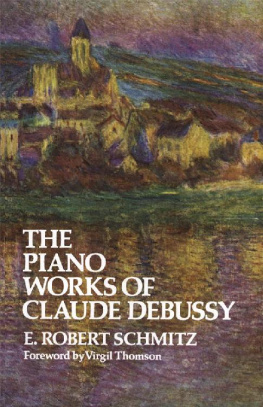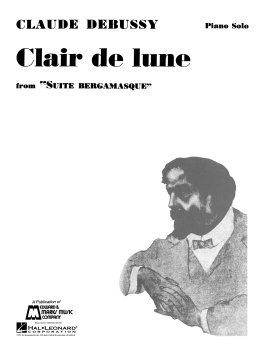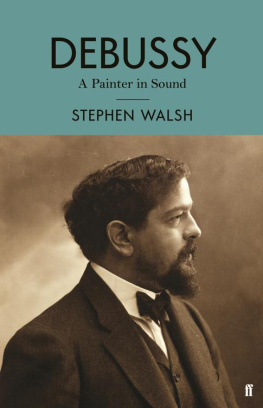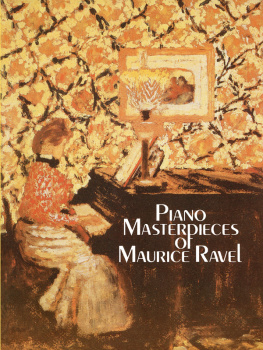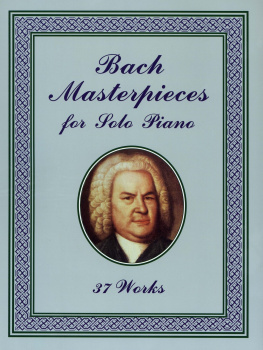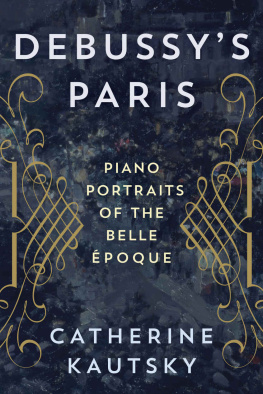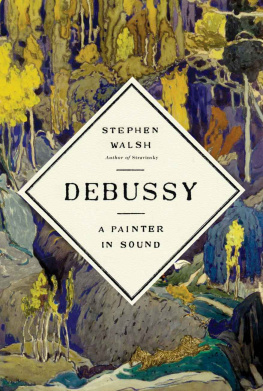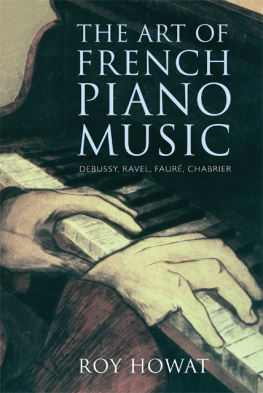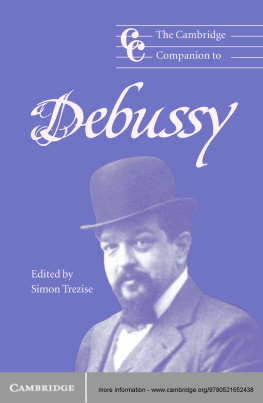E. Robert Schmitz - The Piano Works of Claude Debussy
Here you can read online E. Robert Schmitz - The Piano Works of Claude Debussy full text of the book (entire story) in english for free. Download pdf and epub, get meaning, cover and reviews about this ebook. year: 2014, publisher: Dover Publications, genre: Art. Description of the work, (preface) as well as reviews are available. Best literature library LitArk.com created for fans of good reading and offers a wide selection of genres:
Romance novel
Science fiction
Adventure
Detective
Science
History
Home and family
Prose
Art
Politics
Computer
Non-fiction
Religion
Business
Children
Humor
Choose a favorite category and find really read worthwhile books. Enjoy immersion in the world of imagination, feel the emotions of the characters or learn something new for yourself, make an fascinating discovery.
- Book:The Piano Works of Claude Debussy
- Author:
- Publisher:Dover Publications
- Genre:
- Year:2014
- Rating:5 / 5
- Favourites:Add to favourites
- Your mark:
The Piano Works of Claude Debussy: summary, description and annotation
We offer to read an annotation, description, summary or preface (depends on what the author of the book "The Piano Works of Claude Debussy" wrote himself). If you haven't found the necessary information about the book — write in the comments, we will try to find it.
This book is a firsthand report of a great composers intentions in regard to the performance of his music. These intentions have been digested and interpreted for us by the composers friend Robert Schmitz (18891949), who was himself a distinguished pianist, an articulate musician, and a well-known teacher. The product is an authoritative commentary on the entire body of Debussys work for piano solo.
Written for both performers and listeners, the books purpose is to increase enjoyment of and insight into these works. The books shorter opening section comprises notes on many general aspects of the composers life and work; a biographical sketch; a discussion of Debussys place in relation to the concepts of impressionism and romanticism; his use of classical forms, tonality and modality, melody, counterpoint, etc. Section two, the heart of the book, examines in detail the whole of Debussys music for solo piano, two hands. Seventy-one pieces in all are included: The Arabesques, the Suite Bergmasque, the Estampes, Images, Childrens Corner, Prludes and tudes. Each in its chronological place, the pieces are first described as a whole as to mood, source of programmatic inspiration, structure, tonality, and other characteristics. Then follows specific suggestions dealing with technical and expressive problems of particular measures and phrases.
The book is not meant as a substitute for Debussys piano works; on the contrary, it will cause both listeners and performers to turn to this superb corpus of music with new interest and insight. Complete, thorough, authoritative and important. San Francisco Chronicle. It is a thoughtful and mature reference book and though I am at variance with certain of its premises and conclusions, there is much to provoke the intelligent music lover and the inquiring musician. Abram Chasins, The New York Times. There is no doubt that he had closely identified himself with the great French composer, and his love and belief in the music shine through every page of this book. H. C. Schonbert, The Saturday Review.
E. Robert Schmitz: author's other books
Who wrote The Piano Works of Claude Debussy? Find out the surname, the name of the author of the book and a list of all author's works by series.

